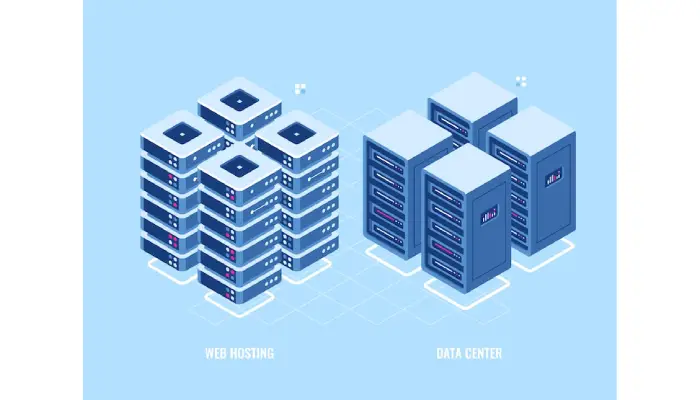Optimizing Traffic Flow With Application Load Balancer For Enhanced Performance

Optimizing traffic flow is critical for any organization that relies on web applications. An application load balancer plays a pivotal role in ensuring that traffic is distributed efficiently across multiple servers. By intelligently is especially important in scenarios where there are sudden spikes in traffic, such as during a product launch or a flash sale. With an application load balancer in place, the application can handle high volumes of traffic without compromising performance. Moreover, modern ALBs come equipped with crucial for maintaining a positive user experience. Additionally, the use of application load balancers can lead to more efficient resource utilization, as servers are not unnecessarily overloaded, leading to reduced operational costs. In a world where milliseconds can make a difference in user satisfaction and conversion rates, optimizing traffic flow with an application load balancer is not just a best practice—it’s a necessity.
Maximizing Uptime And Reliability With Application Load Balancer Solutions
In the realm of digital services, uptime and reliability are non-negotiable. Application load balancers are reputation. Furthermore, an application load balancer can be configured to perform health checks on servers at regular intervals. These health checks enable the ALB to identify and isolate malfunctioning servers before they impact the overall system, thereby maintaining a high level of reliability. In addition to redundancy, ALBs also offer the flexibility to scale resources up or down based on demand, ensuring that the application can handle varying levels of traffic without compromising on performance. This capability is particularly beneficial for businesses that experience seasonal or unpredictable traffic patterns. In essence, by implementing application load balancer solutions, organizations can maximize their uptime and reliability, providing users with a consistent and dependable experience.

Application Load Balancer: Streamlining Web Traffic For Superior User Experience
User experience is a critical factor in the success of any web application, and application load balancers are central to delivering a smooth and responsive user interface. By intelligently managing the flow of web traffic, ALBs ensure that users can access the application quickly and without interruption. When a user makes a request, the application load balancer routes it to the most appropriate server, based on factors Furthermore, application load balancers can be configured to prioritize certain types of traffic or users, ensuring that critical services receive the bandwidth and resources they need to function optimally. By streamlining web traffic, application load balancers not only enhance the user experience but also contribute to the application’s overall success by keeping users engaged and satisfied.
Securing Your Network With Advanced Application Load Balancer Techniques
In an era where cyber threats are becoming increasingly sophisticated, securing network infrastructure is a top priority for businesses. Application load balancers play a vital role in enhancing network security by but also ensures that data is transmitted securely. Additionally, application load balancers can integrate with Web Application Firewalls (WAFs) to protect against common threats such as SQL injection, cross-site scripting (XSS), and Distributed Denial of Service (DDoS) attacks. By filtering out malicious traffic before it reaches the application servers, ALBs help to prevent potential breaches and reduce the risk of data loss. Moreover, the ability to distribute traffic across multiple servers adds an extra layer of security, as it makes it more difficult for attackers to target a single point of failure. The use of advanced load balancing techniques, such as traffic segmentation and geo-blocking, further enhances the security posture of the network. These techniques allow administrators to control traffic based on geographic location or specific user attributes, reducing the likelihood of unauthorized access. In summary, application load balancers are not only essential for optimizing performance but also for securing the network against a wide range of threats.
Boosting Application Performance With Intelligent Load Balancing Algorithms
The performance of an application is heavily influenced by how efficiently its resources are utilized. Intelligent load balancing algorithms are at the heart of application load balancers, enabling them to distribute traffic in a way that maximizes performance and minimizes latency. These algorithms take into account various factors such as server capacity, current load, and network latency to make real-time smooth operation and a bottleneck. In addition to basic round-robin or least-connections algorithms, modern application load balancers offer more sophisticated options such as weighted load balancing, where servers with higher capacities are assigned more traffic, and content-based routing, where requests are directed based on the type of content being accessed. These advanced algorithms not only boost application performance but also enhance user satisfaction by reducing load times and increasing responsiveness. As applications continue to grow in complexity and scale, the role of intelligent load balancing algorithms in maintaining optimal performance will become increasingly critical.
Application Load Balancer: A Key Component In Modern Cloud Architecture
The shift to cloud computing has revolutionized the way businesses operate, offering unprecedented scalability, flexibility, and cost savings. Within this new paradigm, application load balancers have emerged as a key component of modern cloud architecture. They play a crucial role in managing the distribution of traffic across cloud resources, ensuring that applications can scale seamlessly in response to demand. One of the primary advantages of using application load balancers in a cloud environment is their ability to integrate with auto-scaling features. This allows businesses to automatically adjust the performance. Another key benefit of application load balancers in cloud architecture is their ability to facilitate continuous delivery and deployment processes. By directing traffic to different servers during updates or maintenance, ALBs ensure that users experience minimal disruption, allowing for faster and more reliable software releases. As businesses continue to embrace cloud computing, the importance of application load balancers in maintaining a robust and scalable infrastructure cannot be overstated.
Enhancing Scalability With Application Load Balancer For Growing Businesses
Scalability is a critical consideration for any growing business, and application load balancers provide the necessary tools to support expansion without compromising performance. As businesses grow, so does the demand on their web applications, leading to increased traffic and the need for additional server capacity. Application load balancers enable businesses to scale their applications horizontally by adding more servers to the load balancer pool. This approach ensures that the application can handle increased application load balancers support global server load balancing, which allows businesses to distribute traffic across servers in different geographic locations. This not only improves performance by reducing latency but also enhances redundancy and fault tolerance, ensuring that the application remains available even in the event of a regional outage. By leveraging the scalability features of application load balancers, growing businesses can ensure that their applications continue to deliver a high level of performance and reliability, regardless of traffic levels.
Application Load Balancer: Ensuring High Availability And Fault Tolerance
High availability and fault tolerance are essential components of any mission-critical application. Application load balancers are designed to ensure that applications remain accessible and operational, disruptions. Additionally, application load balancers can be configured to perform regular health checks on servers, identifying potential issues before they result in downtime. This proactive approach to server management allows businesses to address problems quickly and minimize the impact on users. Furthermore, application load balancers support the concept of geographic redundancy, where traffic is distributed across servers in different locations. This ensures that even if an entire data center goes down, the application remains available by routing traffic to servers in other regions. In cloud environments, ALBs also integrate with auto-scaling and failover mechanisms, allowing businesses to quickly recover from failures and maintain high availability. The combination of these features makes application load balancers an indispensable tool for ensuring the resilience and reliability of modern applications.
Conclusion
Application load balancers are a critical component in the modern digital ecosystem, providing businesses Furthermore, application load balancers are essential for supporting scalability and fault tolerance, enabling businesses to grow and adapt to changing demands without compromising on performance or reliability. As applications become increasingly complex and the demand for high availability continues to rise, the importance of application load balancers in maintaining a robust and resilient infrastructure will only continue to grow. By understanding and implementing the various features and capabilities of ALBs, businesses can ensure that their applications remain fast, secure, and always available, providing users with the best possible experience.







